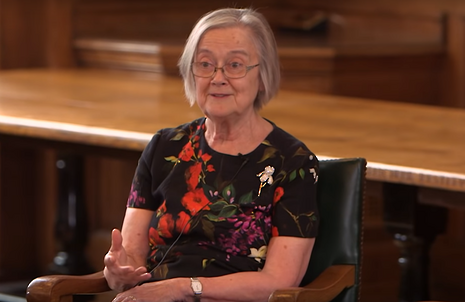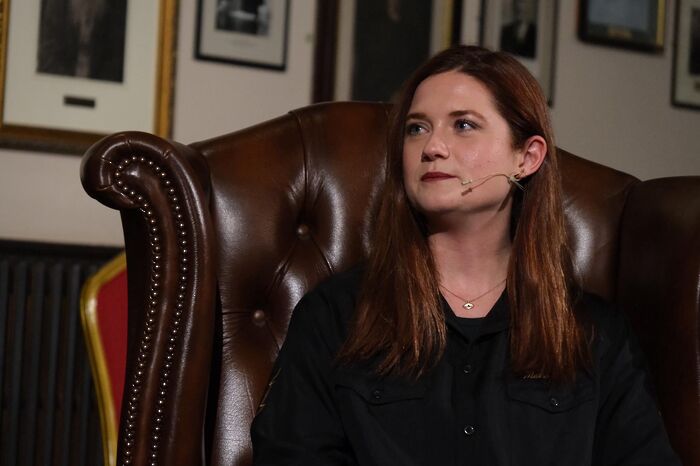Baroness Hale: ‘If the courts don’t personify equality, they’re not personifying the values which underlie the legal system’
The first woman to serve as President of the UK Supreme Court discusses the importance of diversity in the judiciary, her time at Cambridge in the 1960s, and how the law has shaped gender equality

In 2004, when Baroness Brenda Hale became the first woman to hold the position of Law Lord, she created a coat of arms for herself. It bears the motto Omnia Feminae Aequissimae, which translates as “women are equal to everything”. This egalitarian principle has defined Hale’s extraordinary legal career. In 2017, she became the first female president of the UK Supreme Court. Her elevation to the role marked the apex of a long and esteemed career, throughout which Hale has demonstrated a deep-seated commitment to equality and justice for all. As Hale now approaches retirement, this commitment shows no signs of abating.
“There is a lot of talent out there: a lot of talented women, a lot of talented people from ethnic minorities and a lot of talented disabled people,” she says. Perhaps the most prominent and authoritative advocate for the diversification of the bench, Hale has been a consistent and outspoken critic of the judiciary’s failure to improve representation. This is a criticism she reiterates today – “we ought to be able to recognise that talent and bring it onto the judiciary.”
“Hale has been a consistent and outspoken critic of the judiciary’s failure to improve representation”
Hale’s tone is characteristically straightforward and direct; she speaks with a clarity of thought that law students will recognise from her celebrated judgments. “The basic values of the law are justice, fairness and equality. If the courts don’t personify equality, that means they’re not personifying the values which underlie the legal system.”
The evidence for Hale’s metric is damming. Only 24% of judges in the Court of Appeal and in the High Court are female; out of the twelve Supreme Court justices, only three are women and all twelve are white. These statistics are deeply troubling, especially when viewed within the wider context of the legal profession. The numbers of women and BAME individuals entering the legal profession are increasing at an unprecedented rate – for the first time, more women than men are now embarking upon legal careers. However, this gradual shift in the balance of the profession has consistently failed to be reflected within the senior judiciary, which remains overwhelmingly dominated by white males. While the legal profession is gradually becoming increasingly accessible and inclusive, the gilded doors to our highest judicial corridors of power remain firmly shut.
Hale first encountered this uneven playing-field as a Cambridge law undergraduate in the 1960s. “I think there were six women in my year studying law,” Hale reminisces. “We were a very small proportion.” Despite this disparity, Hale excelled academically, graduating from Girton College with a starred first and top of her year. She was called to the Bar in 1969 and spent time in academia before beginning her rapid rise through the ranks of the judiciary.
“While the legal profession is gradually becoming increasingly accessible and inclusive, the gilded doors to our highest judicial corridors of power remain firmly shut”
It is evident that Hale views the issue of diversity within the judiciary as important from more than a purely representational point of view. In Hale’s view, diversifying the judiciary will improve the substantive decision-making of judges, ultimately leading to a fairer implementation of the law. “There is evidence that diverse collective bodies do make better decisions,” she says.
“From time to time, there are decisions where a diversity of background and experience means you bring something to the decision which other people simply don’t have – not because they don’t want to have it, just because they don’t have it. Beverley McLachlin, who was the Chief justice in Canada put it very simply – ‘we lead women’s lives: we have no choice’.”
She makes the point that that the ways in which women live and the ways in which they are treated and perceived by others give them a unique perspective; an experience which Hale says is “as valid in shaping the law and deciding legal cases as any other experience.”
This year marks a century since the Sex Disqualification (Removal) Act 1919 was passed – the first piece of equal opportunities legislation in the UK. It marked a turning point in the fight for gender equality, opening up many professional paths to women for the first time. One hundred years since this historic piece of legislation entered the statute books, Hale reflects on whether she thinks the law itself has become fairer. Her answer is emphatic and delivered without hesitation: “Yes, it undoubtedly has.”
Hale describes the level of discrimination against women within the law prior to the passing of the 1919 Act as “really unbelievable” and says that progress was slow: “It wasn’t very different when I came up to read law in the 1960s. A few things had changed, but not much.”
The situation has now been transformed. “Almost all the things I characterise as being very unfair to women have now – at least in theory – been changed. That doesn’t mean that in practice everything in the garden is rosy, but the law has changed very dramatically.
“But I wouldn’t necessarily put that down to more women being in the law. I would put it down partly to that, and partly to men realising that if the law treated them the way it treated women, they wouldn’t like it either.”
 Comment / Plastic pubs: the problem with Cambridge alehouses 5 January 2026
Comment / Plastic pubs: the problem with Cambridge alehouses 5 January 2026 News / Cambridge businesses concerned infrastructure delays will hurt growth5 January 2026
News / Cambridge businesses concerned infrastructure delays will hurt growth5 January 2026 News / New movement ‘Cambridge is Chopped’ launched to fight against hate crime7 January 2026
News / New movement ‘Cambridge is Chopped’ launched to fight against hate crime7 January 2026 News / AstraZeneca sues for £32 million over faulty construction at Cambridge Campus31 December 2025
News / AstraZeneca sues for £32 million over faulty construction at Cambridge Campus31 December 2025 Interviews / You don’t need to peak at Cambridge, says Robin Harding31 December 2025
Interviews / You don’t need to peak at Cambridge, says Robin Harding31 December 2025










